Abstract
In this study we have determined the effect of the polyene antibiotic amphotericin B on the growth of the eukaryotic microorganism Dictyostelium discoideum. These experiments show that the addition of drug to axenically growing cultures results in an inhibition of growth and cell division. However, with continued incubation, growth is resumed. To determine if the inhibitory effect was due to cell death, the effect of the drug on cell viability was measured. The results showed 10 to 20 times more drug was required to kill cells than to inhibit growth. Since previous studies had indicated that drugs of this type modified cellular permeability, the effect of this drug on osmotic stability of these cells was determined. Results reported in this study show that amphotericin B treatment modifies the cell surface, producing osmotically unstable cells, and that this modification occurs before the onset of cell death and within the same concentration range as used to bring about the inhibition of growth and division. Based on these data it is suggested that the modification in cellular permeability produced by the drug results in the inhibition of growth. This study also reports the results of experiments on the fate of the membrane-damaged cells. These experiments, using radioactive thiourea, showed the restoration of cellular permeability barrier and suggested that the resumption of cell growth occurs after the completion of the repair process.
Full text
PDF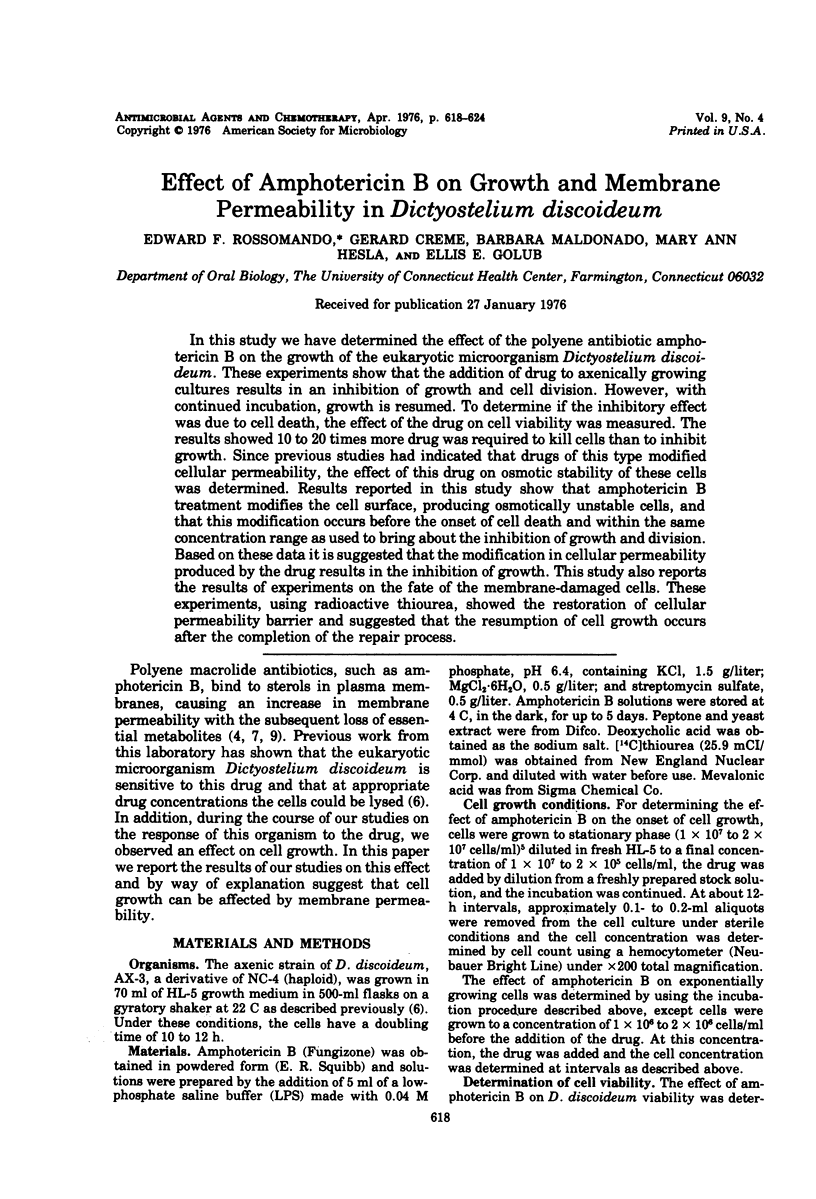
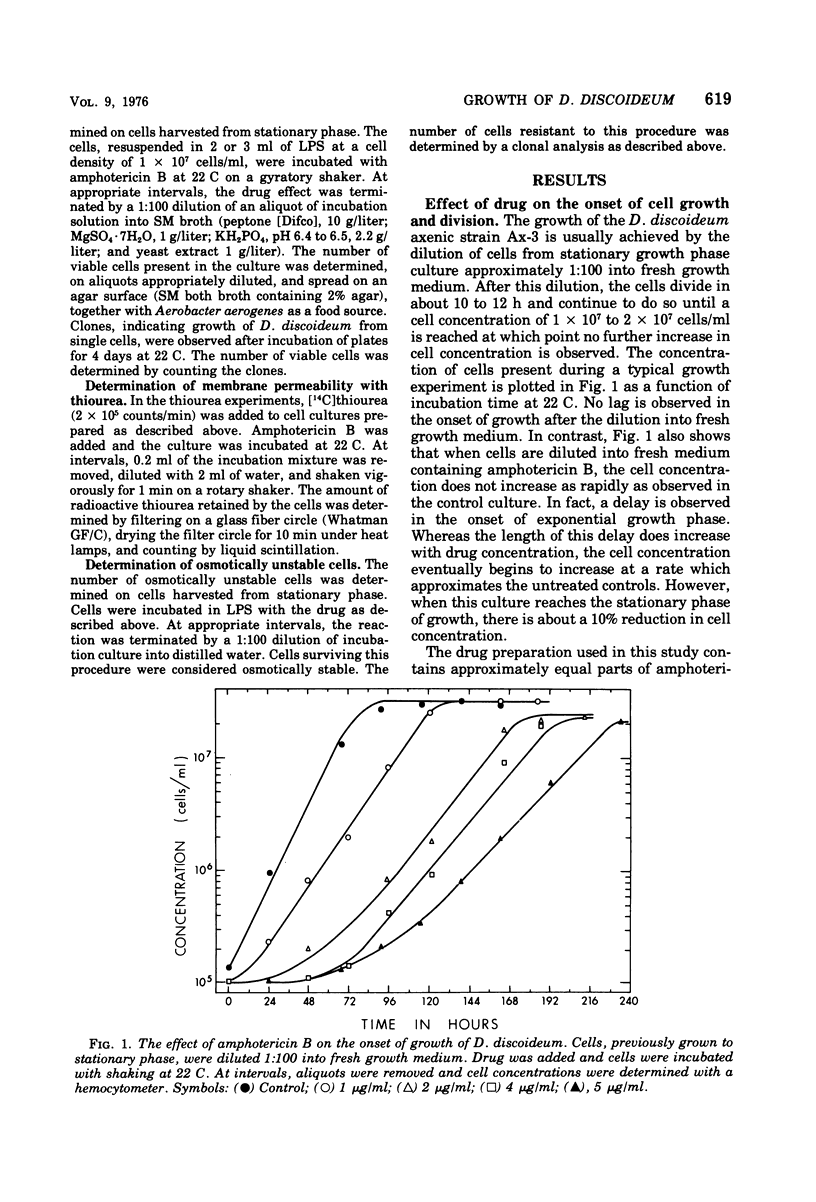
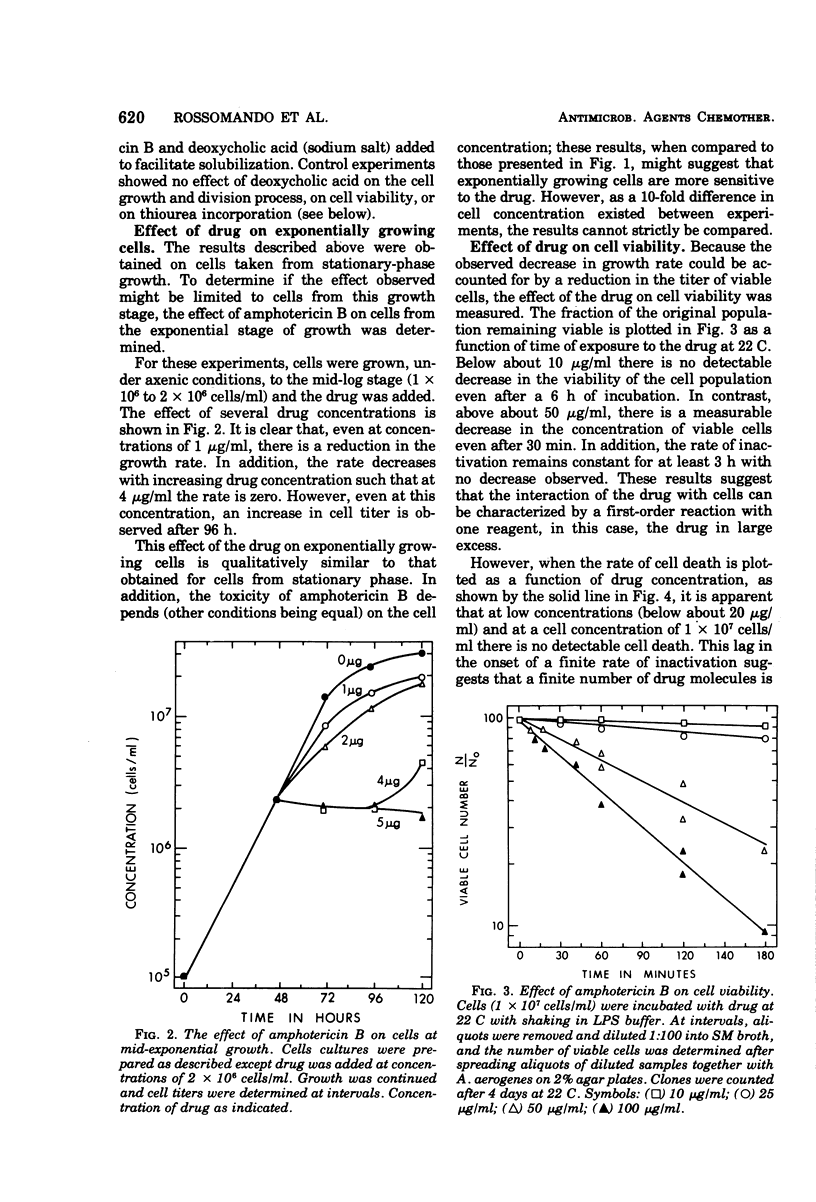
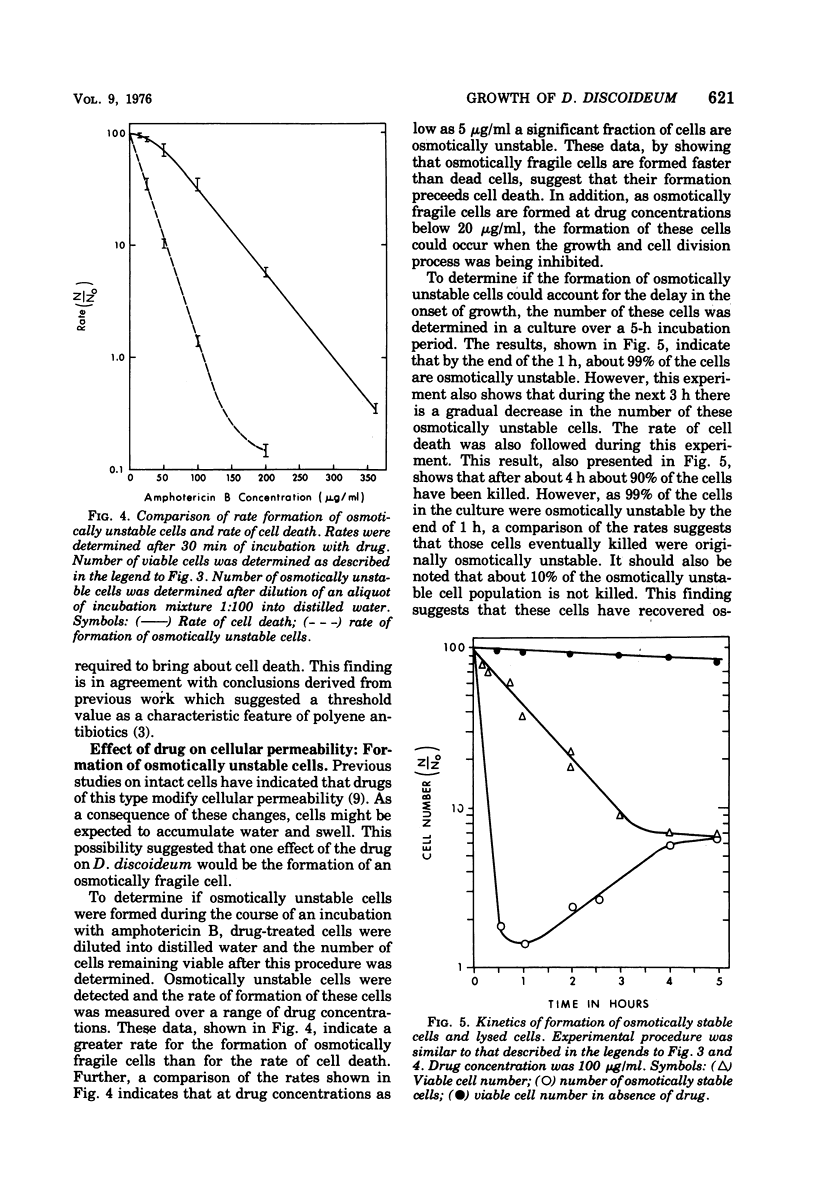
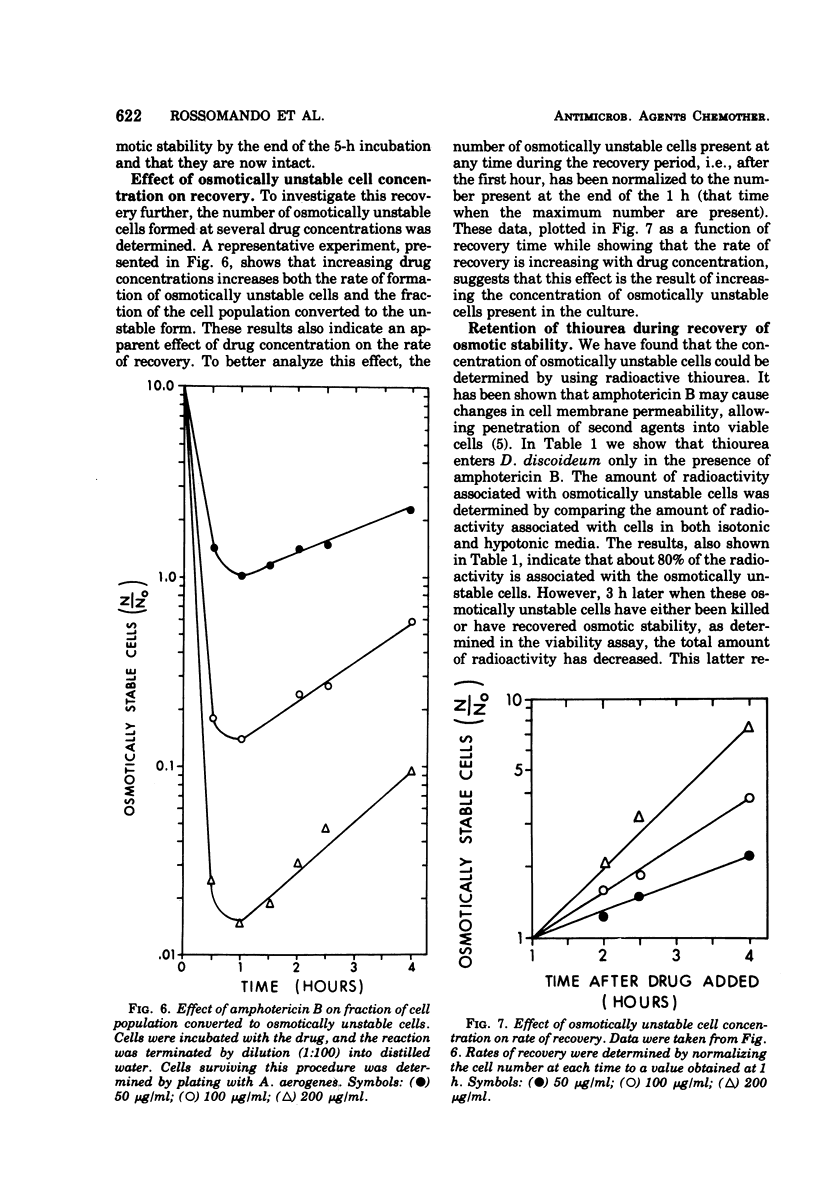
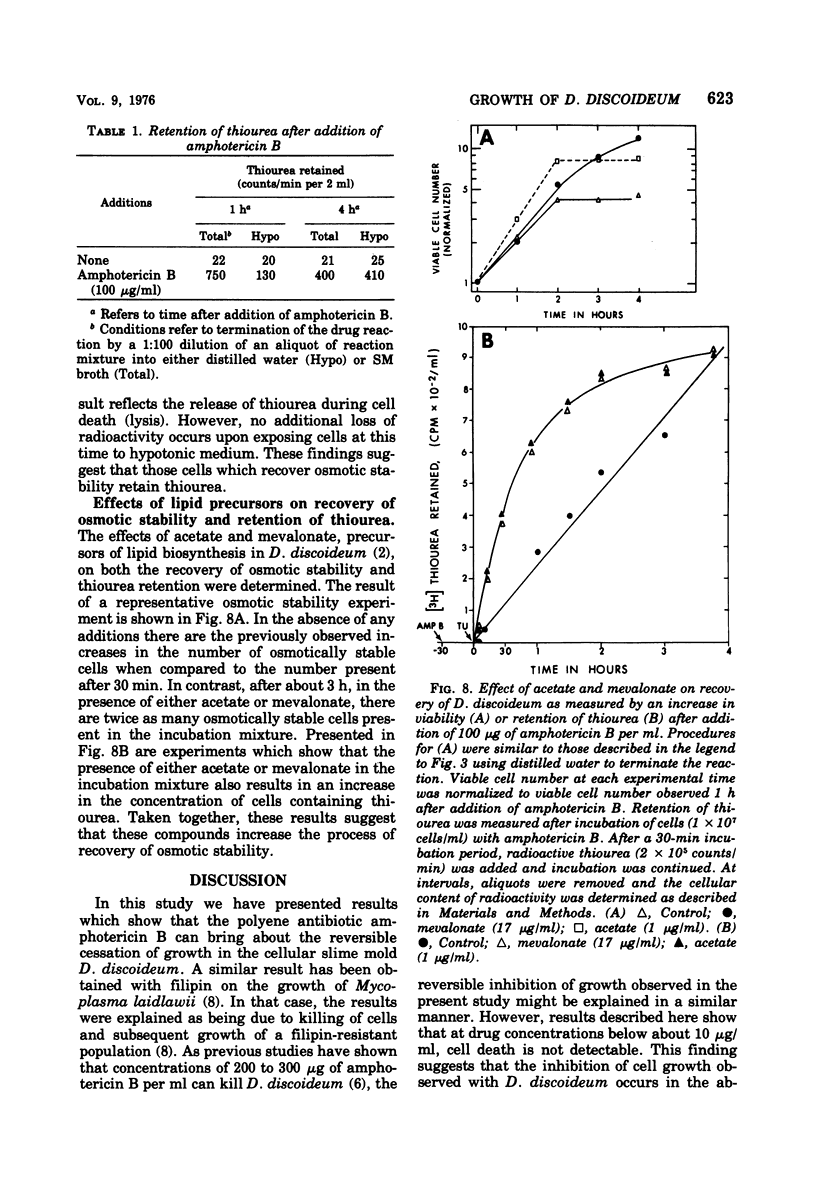
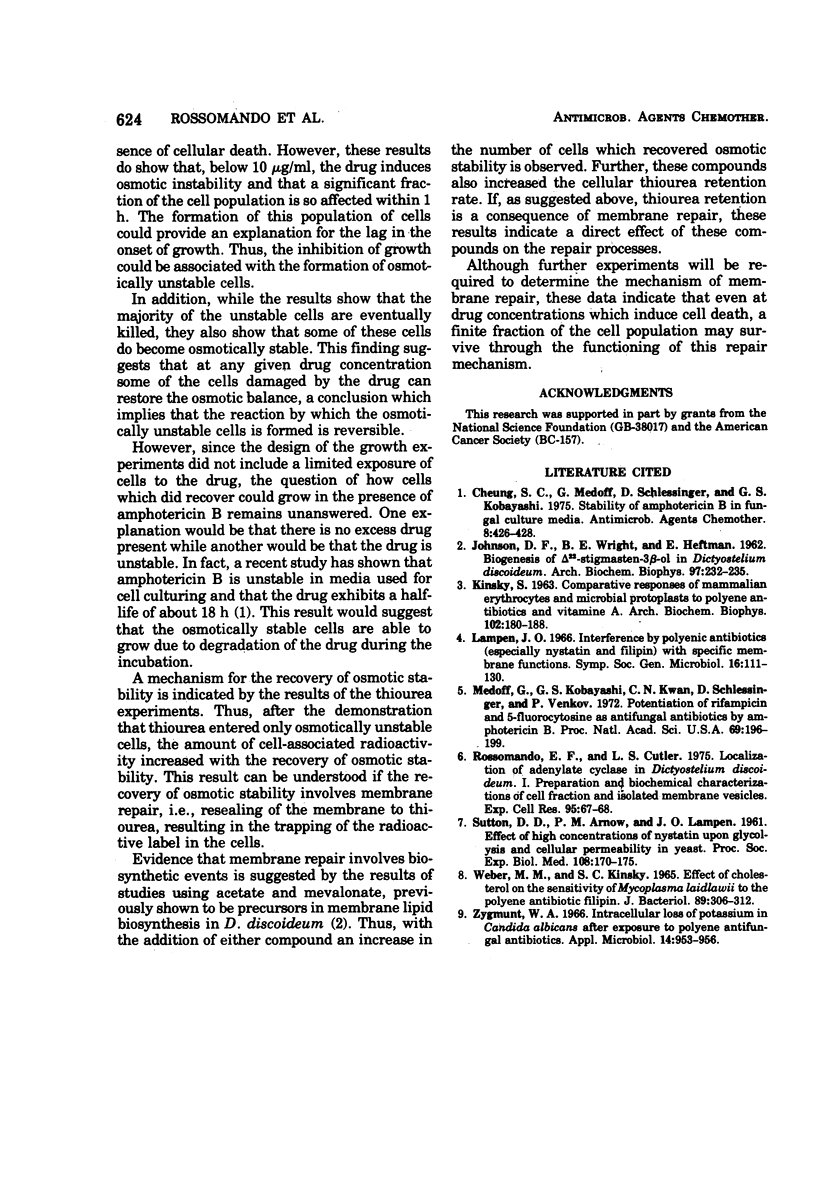
Selected References
These references are in PubMed. This may not be the complete list of references from this article.
- Cheung S. C., Medoff G., Schlessinger D., Kobayashi G. S. Stability of amphotericin B in fungal culture media. Antimicrob Agents Chemother. 1975 Oct;8(4):426–428. doi: 10.1128/aac.8.4.426. [DOI] [PMC free article] [PubMed] [Google Scholar]
- KINSKY S. C. COMPARATIVE RESPONSES OF MAMMALIAN ERYTHROCYTES AND MICROBIAL PROTOPLASTS TO POLYENE ANTIBIOTICS AND VITAMIN A. Arch Biochem Biophys. 1963 Aug;102:180–188. doi: 10.1016/0003-9861(63)90169-3. [DOI] [PubMed] [Google Scholar]
- Medoff G., Kobayashi G. S., Kwan C. N., Schlessinger D., Venkov P. Potentiation of rifampicin and 5-fluorocytosine as antifungal antibiotics by amphotericin B (yeast-membrane permeability-ribosomal RNA-eukaryotic cell-synergism). Proc Natl Acad Sci U S A. 1972 Jan;69(1):196–199. doi: 10.1073/pnas.69.1.196. [DOI] [PMC free article] [PubMed] [Google Scholar]
- Rossomando E. F., Cutler L. S. Localization of adenylate cyclase in Dictyostelium discoideum. I. Preparation and biochemical characterizations of cell fractions and isolated plasma membrane vesicles. Exp Cell Res. 1975 Oct 1;95(1):67–78. doi: 10.1016/0014-4827(75)90610-2. [DOI] [PubMed] [Google Scholar]
- SUTTON D. D., ARNOW P. M., LAMPEN J. O. Effect of high concentrations of nystatin upon glycolysis and cellular permeability in yeast. Proc Soc Exp Biol Med. 1961 Oct;108:170–175. doi: 10.3181/00379727-108-26882. [DOI] [PubMed] [Google Scholar]
- WEBER M. M., KINSKY S. C. EFFECT OF CHOLESTEROL ON THE SENSITIVITY OF MYCOPLASMA LAIDLAWII TO THE POLYENE ANTIBIOTIC FILIPIN. J Bacteriol. 1965 Feb;89:306–312. doi: 10.1128/jb.89.2.306-312.1965. [DOI] [PMC free article] [PubMed] [Google Scholar]
- Zygmunt W. A. Intracellular Loss of Potassium in Candida albicans After Exposure to Polyene Antifungal Antibiotics. Appl Microbiol. 1966 Nov;14(6):953–956. doi: 10.1128/am.14.6.953-956.1966. [DOI] [PMC free article] [PubMed] [Google Scholar]


